Participants
Organisations
Administering Organisation
Macquarie University (MQ)
Collaborating Organisations
Curtin University (CU)
University of Western Australia (UWA)
Partners
Australian Partner
Geological Survey of Western Australia (GSWA)
Dr Ian Tyler - CCFS Leader GSWA
International Partners
CNRS and Université de Montpellier, France
Institute of Geology and Geophysics, Chinese Academy of Sciences, Beijing, China
University of Maryland, USA
University of Saskatchewan, Canada
Bayreuth University, Germany
Chief Investigators
Associate Professor Elena Belousova - MQ
Professor Simon Clark - MQ
Associate Professor Marco Fiorentini, Node Leader - UWA
Professor Stephen Foley, Research Coordinator - MQ
Professor William Griffin - MQ
Professor Matt Kilburn - UWA
Professor Zheng-Xiang Li - CU
Associate Professor Alexander Nemchin - CU
Associate Professor Craig O'Neill - MQ
Professor Suzanne Y. O'Reilly, Director - MQ
Professor Martin Van Kranendonk - University of NSW
Professor Simon Wilde, Node Leader - CU
Associate Professor Yingjie Yang - MQ
Partner Investigators
Australian Partner Investigator
Dr Klaus Gessner - Geological Survey of Western Australia
Professor T. Campbell McCuaig, - BHP Billiton
International Lead Partner Investigators
Professor Michael Brown - Maryland
Dr David Mainprice - Montpellier
Professor Catherine McCammon - Bayreuth
Professor Fuyuan Wu - CAS Beijing
Associate Investigators
Associate Professor Juan Carlos Afonso - MQ
Dr Olivier Alard - MQ
Associate Professor Nathan Daczko - MQ
Professor Simon George - MQ
Dr Richard Glen - MQ Adjunct Professor
Dr Masahiko Honda - Australian National University
Professor Dorrit Jacob – MQ
Associate Professor Mary-Alix Kaczmarek – University Paul Sabatier Toulouse III
Associate Professor Christopher Kirkland - CU
Professor Jochen Kolb - GEUS
Dr Yongjun Lu - GSWA
Professor Louis-Noel Moresi - University of Melbourne
Professor Steven Reddy - CU
Associate Professor Tracy Rushmer - MQ
Associate Professor Bruce Schaefer - MQ
Professor Paul Smith - MQ
Professor Simon Turner - MQ
Dr Michael Wingate - GSWA
Professor Shijie Zhong - University of Colorado, Boulder, USA
Early Career Researchers
Dr Raphael Baumgartner - UWA
Dr Montgarri Castillo-Oliver - MQ
Dr Denis Fougerouse - CU
Dr Rongfeng Ge - CU
Dr Andrea Giuliani - DECRA - MQ at UM
Dr Christopher Gonzalez - UWA
Dr Johannes Hammerli - UWA
Dr Hadrien Henry - MQ
Dr Uwe Kirscher – CU
Dr Crystal LaFlamme - UWA
Dr Nor Liptai - MQ
Dr Jianggu Lu - GSWA
Dr Ross Mitchell - CU
Dr Hugo Olierook - CU
Dr Beñat Oliveira Bravo - MQ
Dr Luis Parra-Avila - UWA
Dr Romain Tilhac - MQ
Dr Lei Wu - CU
Dr Weihua Yao - CU
A full list of 2018 CCFS participants is given in Appendix 4 and kept current at Participants

NEW STAFF
Dr Luc-Serge Doucet joined CCFS as part of Prof Zheng-Xiang Li’s ARC Laureate team at Curtin University to work on data mining and the field-based Oceanic-LIP project. Luc-Serge completed a PhD at the Université Jean Monnet. His research focused on studies of the formation and evolution of the lithosphere using major, minor and trace elements and isotopic data (Re/Os, Lu/Hf, Zn, Fe, Cu, etc.) as well as petrographic and petrophysic observations.
Other new staff (featured in our ECR section)...
Dr Hadrien Henry - MQ
Dr Nora Liptai - MQ
Dr Jianggu Lu - MQ
Dr Lei Wu - CU
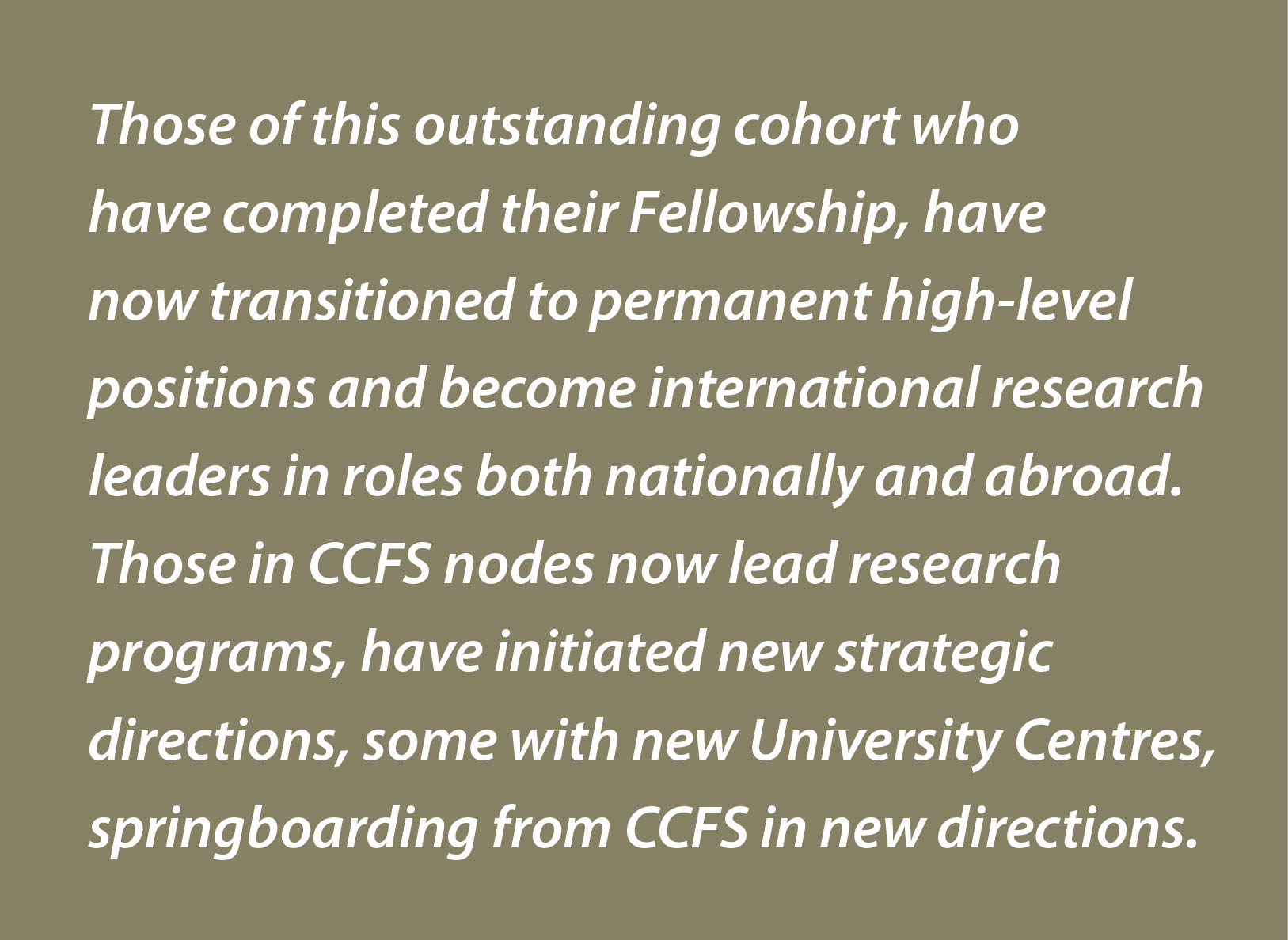
CCFS FUTURE FELLOWS
The application for the CoE CCFS foreshadowed that such a Centre of Excellence would become an attractor for rising stars and research leaders in relevant disciplines and fields of interest. The success of CCFS participants in the ARC Future Fellow rounds emphasises this role of our Centre in recruiting high-flyers at early to mid-career levels. Eleven Future Fellows; Associate Professor Elena Belousova, Associate Professor Marco Fiorentini, Dr Heather Handley, Professor Dorrit Jacob, Associate Professor Craig O’Neill, Professor Sandra Piazolo, Associate Professor Yingjie Yang, Dr Xuan-Ce Wang, Dr David Wacey, Dr Olivier Alard and Dr Kate Selway. have completed or are working on projects relevant to CCFS goals. The CCFS Future Fellows all continue to make significant contributions to CCFS, either directly or as external collaborators and Associates. Those of this outstanding cohort who have completed their Fellowship, have now transitioned to permanent high-level positions and become international research leaders both nationally and abroad. Those in CCFS nodes now lead research programs, have initiated new strategic directions, some with new University Centres, springboarding from CCFS in new directions. Their profiles can be accessed from the “Participants” section of our previous reports.
EARLY CAREER RESEARCHERS (ECR)
The second primary goal of CCFS (see Goals) concerns the recruitment, development and mentoring of Early Career Research (ECR) staff “for the development of the next generation of Australia’s geoscientists”.
These CCFS ECRs have all achieved high positions, both nationally and abroad, and are having significant impact across many countries including Japan, Spain, Chile, USA, Europe and Asia. They are contributing in diverse areas that include: the nuclear science and environmental sector, CSIRO, Geological Surveys, international Research Centres, Government instrumentalities, the exploration industry and in consultancies in the private sector.
The following profiles present 2018 ECRs and summarise their expertise and research areas.
New 2018
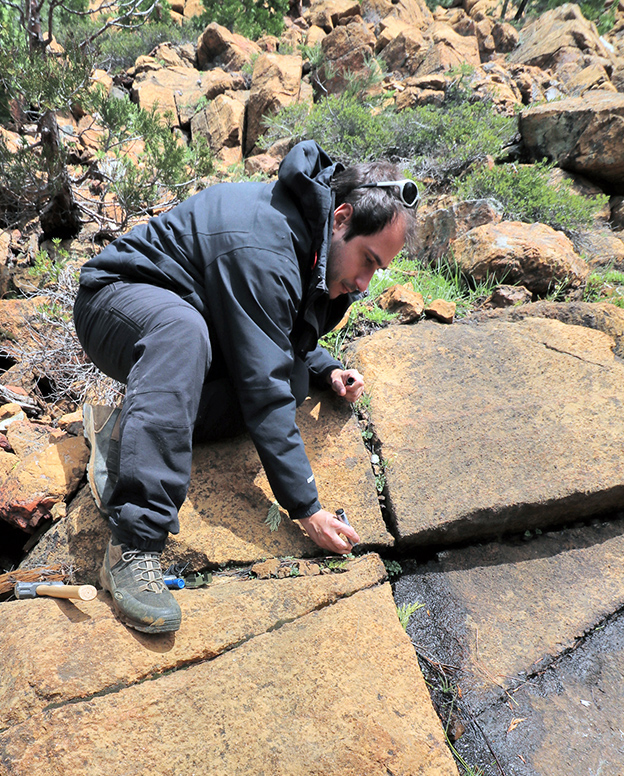
Dr Hadrien Henry is a Research Associate at CCFS, Macquarie University. He completed his BSc and MSc at the Université Paul Sabatier Toulouse III. In 2015, he commenced a cotutelle PhD degree between Macquarie University and Université Paul Sabatier, Toulouse III. Hadrien’s thesis focused on the microstructure and petrophysics of pyroxenites and mantle using samples from the Cabo Ortegal Complex, Spain and the Trinity ophiolite, California, USA. In 2018, he graduated from Université Paul Sabatier Toulouse III, and will graduate from Macquarie University in early 2019. As a Research Associate in CCFS at Macquarie University, Hadrien works on the microstructure of olivine megacrysts from Åheim peridotite body in western Norway and takes part in multiple collaborations involving Electron BackScattered Diffraction (EBSD) and the study of microstructures. Hadrien is also part of the TerraneChron® team at CCFS. This research contributes to CCFS Flagship Program 1. See Research highlight "Pyroxenite microstructures help unlock deep Earth secrets".
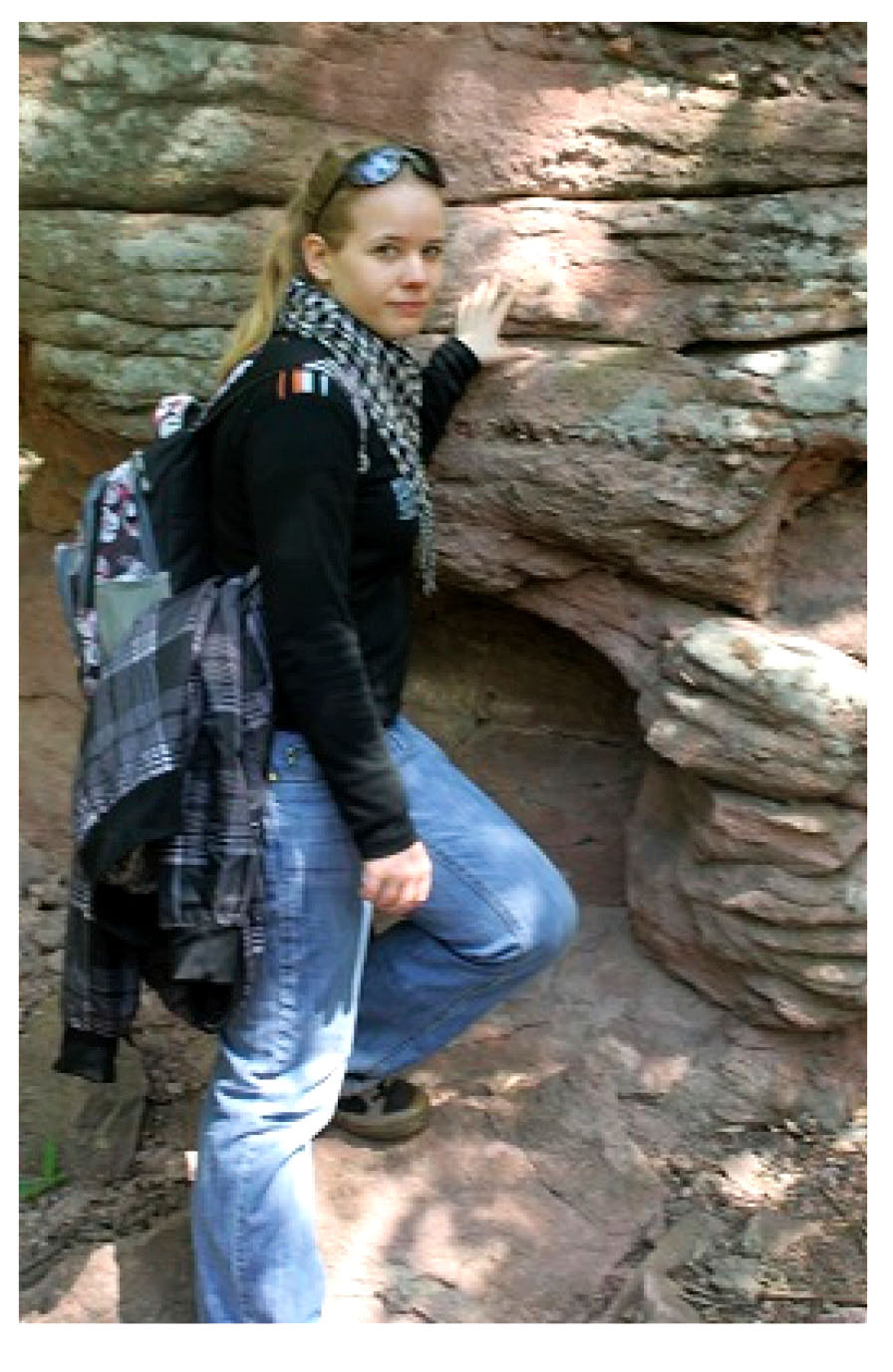
Dr Nora Liptai joined CCFS as a cotutelle student with Eötvös Loránd University in Budapest, Hungary after completing her undergraduate degree there. Nora commenced her PhD studies with CCFS at Macquarie University on “The Geochemical and physical properties and evolution of the lithospheric mantle beneath the Nógrád- Gömör Volcanic Field (Northern Pannonian Basin, Central Europe)” in 2015.
This study derived and interprets an extensive integrated set of analytical and imaging results for upper mantle peridotite xenoliths from the northern Pannonian Basin, Central Europe, including mineral, whole-rock and melt-inclusion petrography and geochemistry, crystal preferred orientation and ‘water’ contents. A sequence of geochemical, deformation and tectonic processes is reconstructed, tracing the geodynamic evolution of the region. Multiple metasomatic events by a variety of different infiltrating mafic melts at different times prior to entrainment by the host alkali basalt are identified, as well as deformation due to recent tectonism.
On completion of her PhD, Nora became part of the TerraneChron® team at CCFS until September 2018. She then commenced a postdoctoral research position at the Geodetic and Geophysical Institute, Hungarian Academy of Sciences, Budapest, Hungary, continuing her studies of mantle geochemistry and physical properties. This research contributes to CCFS Flagship Program 1. See Research highlight Research highlight Micro to global: microstructures reveal mantle secrets beneath the Pannonian Basin, Central Europe.
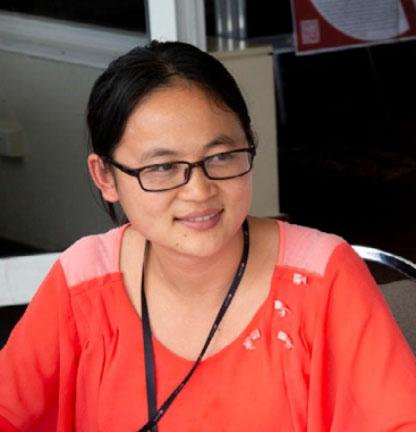
Dr Jianggu Lu was awarded a cotutelle PhD by China University of Geosciences and CCFS at Macquarie University. Her project examined mantle xenoliths from southeast China and southeast Australia, “Investigating the Nature and Evolution of the Lithospheric mantle”.
Studies of peridotite xenoliths from SE China show how the residual refractory lithospheric mantle has become more fertile through multi-stage melt infiltration related to paleo-Pacific subduction. Garnet pyroxenite xenoliths from southeastern Australia record partial melting of the convective mantle wedge above an analogous subduction zone; they crystallised from the earliest recognised mafic melts to infiltrate the lithospheric mantle, and imprint a geochemical record of subsequent tectonic uplift. Decoding these complex records allowed reconstruction of lithospheric evolution and the nature and origins of volatile fluxes from the deep Earth through time.
In September 2018, Jianggu commenced a Research Associate position at the Second Institute of Oceanography, Ministry of Natural Resources, Hangzhou China. This research contributes to CCFS Flagship Program 1.
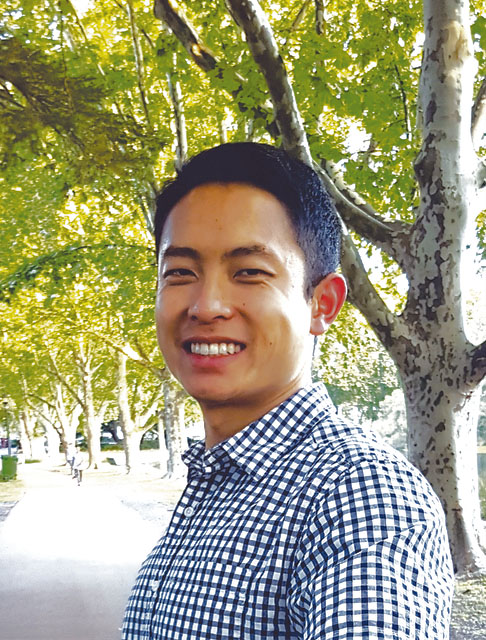
Dr Lei Wu received his PhD in 2017 from the University of Alberta, Canada where he reconstructed the amalgamation history of East Asia using paleomagnetic and seismological data. After his PhD, Dr Wu conducted a nine-month postdoc applying the shear wave splitting and receiver functions methods to determine the upper lithospheric mantle / crustal anisotropy in the Western Canada Sedimentary Basin.
In 2018, Dr Wu commenced a two-year postdoc position with CCFS at Curtin University, working with Zheng-Xiang Li to build a new global full- plate paleogeographic model.
His research interests involve geophysics, paleogeographic reconstruction, seismology and paleomagnetism. This research contributes to CCFS Flagship Program 5.
Continuing
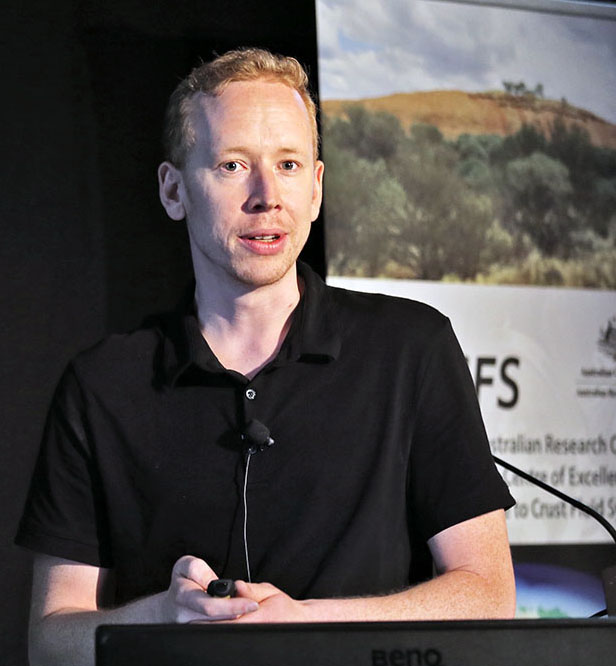
Dr Raphael Baumgartner received his MSc in Economic Geology from the University of Leoben (Austria). He joined CCFS/ CET at UWA in June 2013, as a PhD candidate, seeking to unravel the potential of martian igneous systems to host precious metal- enriched sulfide mineralisation. His work provided important insights into the behaviours of (highly) siderophile and chalcophile elements in martian mantle reservoirs and derived igneous systems through mineral-scale analytical experiments on sulfide and oxide phases from shergottite and chassignite meteorites - a rare group of meteorites that are thought to represent samples of the volcanic martian crust.
At the completion of his PhD, Raphael was employed as a Research Associate at CET. His research focused on the 3.5 Ga old stromatolites at North Pole Dome, Dresser Formation, Pilbara (WA) and their link to hydrothermal fluids. He examined whether such fluids delivered transition metals such as Zn, Mo and Ni, known to be key ingredients for bacterial metabolism and thus likely catalysts for the origin of life on Earth. For this research, Raphael examined the micron- to nano-scale textural and trace metal characterisation of associated Fe- and Zn-sulfide laminate using systematic in situ multiple sulfur- isotope analyses to unveil the potential microbial component of sulfide precipitation.
In 2018 Raphael took up a postdoctoral position at UNSW to continue his work with Martin Van Kranendonk’s group. Raphael’s research contributes to CCFS Flagship Program 4.
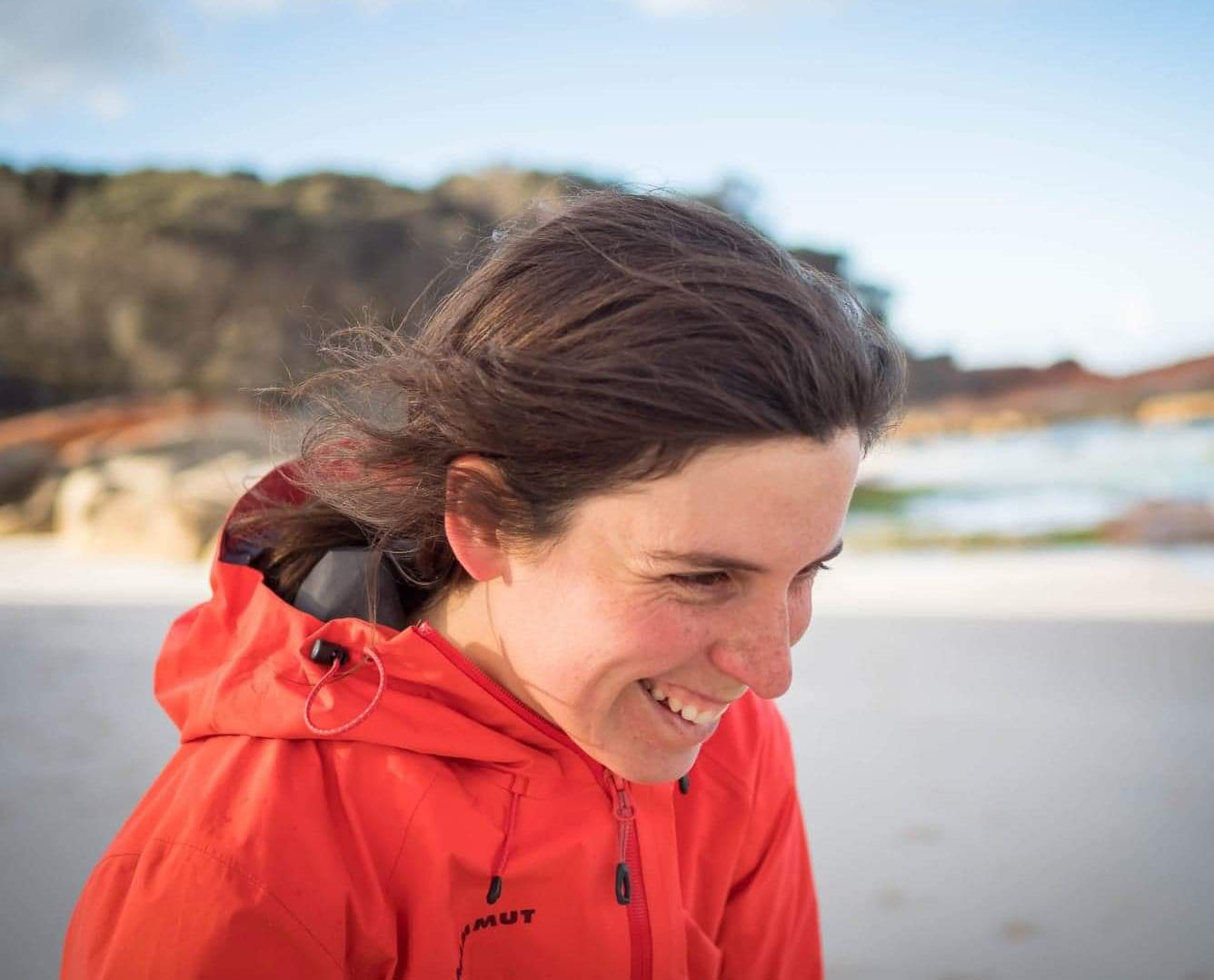
Dr Montgarri Castillo-Oliver completed her Bachelor and Master degrees in Geology at Universitat de Barcelona. In November 2014, she joined CCFS as a cotutelle PhD student, carrying out her research both at Universitat de Barcelona and Macquarie University. During her PhD, Montgarri characterised several Angolan kimberlites of the Las Lundas province, as well as their diamond indicator minerals (mainly ilmenite and garnet).
She also studied their mantle xenoliths to better understand the structure and metasomatic evolution of the subcontinental lithospheric mantle in NE Angola. In 2016, she graduated with a PhD from both universities Since then, Montgarri has been employed as a Research Associate by CCFS at Macquarie University. Her postdoctoral research is based on the use of in situ techniques [(MC)-LA-ICP-MS and SIMS] to characterise primary and secondary carbonates in kimberlites worldwide, combining textural information with in situ compositional and isotopic (C, O and Sr) analysis. This integrated approach provides new insights into the isotopic composition of the parental kimberlite melt, and thus that of the Earth’s mantle. It also allows discrimination between the different processes that led to carbonate formation in kimberlites (i.e. magmatic and deuteric crystallisation, degassing, weathering, etc.). By studying the C isotope variation of the deep mantle with space and time, Montgarri aims to contribute to the current understanding of the deep Earth’s carbon cycle in cratonic roots. This research contributes to CCFS Flagship Program 1. See Research highlight "Building the house from the basement: in situ isotopes in kimberlitic carbonates".

Dr Denis Fougerouse completed his BSc at the university of Saint-Etienne (France). His MSc, at the University of Nancy (France), focused on the timing of mineralisation events in the West Africa Craton using Re-Os dating. In 2012, Denis commenced his PhD at the University of Western Australia in the Centre for Exploration Targeting (CET). Completed in 2015, his PhD focused on the mineralisation processes occurring in the giant Obuasi gold deposit.
Denis is currently a Postdoctoral Research Associate at Curtin University in the Geoscience Atom Probe group. He has worked on developing the geological applications of atom probe microscopy to a wide range of minerals including zircon, monazite, titanite, plagioclase and sulfides. In particular, Denis is investigating the mobility of trace elements and their implications for geochemistry and geochronology. His research contributes to CCFS Flagship Program 2.
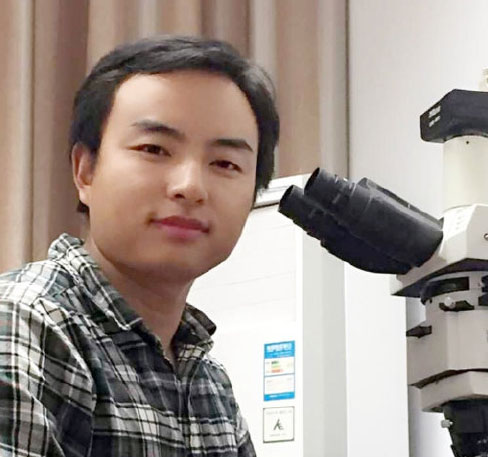
Dr Rongfeng Ge completed his undergraduate and MSc studies at Nanjing University (China) and joined CCFS in 2012 as a cotutelle PhD candidate. He received his PhD degrees from Nanjing University in December 2014 and from Curtin University in August 2015 and became a Research Associate at Curtin University. Rongfeng’s study interests included the origin and evolution of continental crust, the reconstruction of Precambrian supercontinents, and the tectonic evolution of orogenic belts. His primary focus was on the Tarim Craton, NW China, and the Central Asian Orogenic Belt. Through multiple laboratory techniques and field-based work, his study revealed the oldest rocks and crustal components from the Tarim Craton, a Tarim - North China connection in the Columbia/Nuna supercontinent, and a long-lived subduction - accretionary orogenic system at the circum-Rodinia subduction zone.
Rongfeng’s research then focused on the Hadean detrital zircons from Jack Hills. Using cutting-edge techniques, including ion imaging and the atom probe, Rongfeng re-examined isotopic and elemental distributions and compositions of these ancient and complex zircon grains. This study provided new insights into the origin of continental crust and the geodynamic setting in the early Earth.
In May 2018, Rongfeng left CCFS to take up the position of Associate Professor at Nanjing University where his research focuses on the Precambrian geological evolution of the Tarim Craton. This research contributes to CCFS Flagship Program 6.
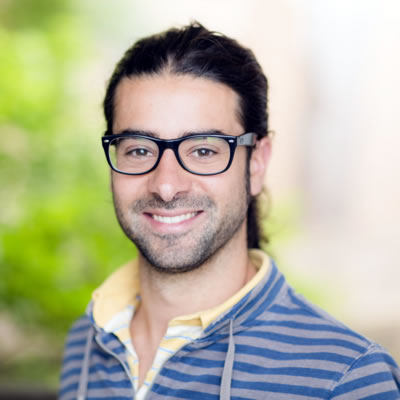
Dr Andrea Giuliani joined CCFS in June 2015 as an ARC DECRA (Discovery Early Career Research Award) Fellow. Andrea completed his PhD in mantle geochemistry at the University of Melbourne in 2013 where he then undertook a year of post- doctoral research in 2014 before becoming a lecturer in Igneous Petrology in January 2015.
Andrea’s research focuses on the composition and sources of deep Earth fluids and melts - including kimberlites, which are the primary source of terrestrial diamonds. Kimberlites represent the deepest melts that reach the Earth’s surface and therefore provide a unique probe into the deepest realms of our planet.
At CCFS, Andrea is working closely with Professors Sue O’Reilly, Bill Griffin and Steve Foley to improve current understanding of the evolution of the Earth’s interior and the melting processes affecting it, with particular attention to the role of volatiles and recycled crustal and surface material that trigger deep melting events. His research contributes to CCFS Flagship Program 1. See Research highlights "Building the house from the basement: in situ isotopes in kimberlitic carbonates" and "Olivine grains - new clues to the origin of diamondiferous kimberlites".
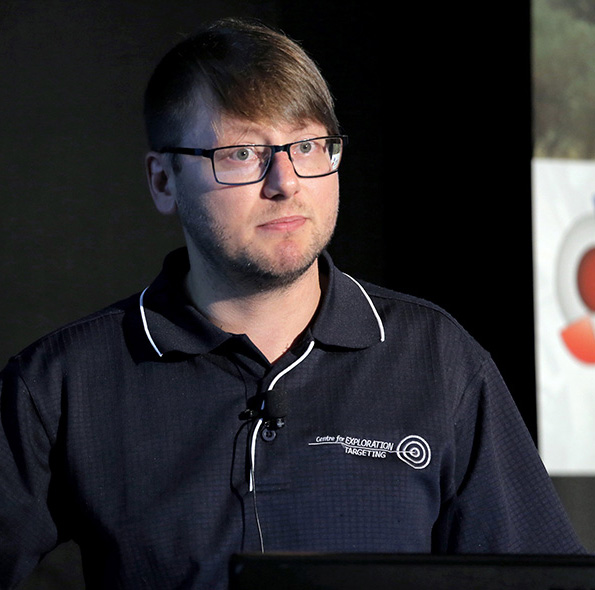
Dr Christopher Gonzalez joined the CET and CCFS team, first as a PhD student in 2012, and then as a Research Associate. Chris graduated from the University of Minnesota, Twin Cities with Bachelor of Science degrees in Geology and Geophysics (2011). Chris undertook PhD studies at CET as part of an Arc Linkage project “Multiscale Dynamics of Ore Body Formation”.
His research included numerical modelling of geodynamic processes with a focus on H2O-CO2 fluids. Using a thermomechanical numerical modelling code (I2VIS), new (de) carbonation routines and carbonated lithologies were coded into I2VIS during his thesis to gain a better understanding of the two most abundant recycled volatiles on Earth (H2O and CO2).
As a Research Associate, he applied this code to quantitatively assess metasomatism and melting processes ongoing during continental collision using the Ivrea-Verbano zone as a natural laboratory. Specifically, sulfur-rich carbonate bearing ‘pods’ have been observed and are thought to be a direct consequence of slab derived carbonic fluids interacting with the mantle wedge. To examine this hypothesis, Chris used his code to numerically constrain the sequence of events that led to the formation of the sulfur-rich carbonate pods. This research aligned with CCFS Flagship Program 2.
In Feb 2018, Chris moved to the School of Earth Atmosphere & Environment at Monash University to take up the position of Assistant Lecturer.

Dr Johannes Hammerli completed his MSc in Earth Sciences at the University of Bern, Switzerland, before moving to Townsville, Australia. He received his PhD from James Cook University in 2014, where he studied element mobility during metamorphism and the identification of hydrothermal fluids by microanalysis. In late 2014 Johannes joined CET on a Swiss National Science Foundation Fellowship. During this time, he focused on studying crustal differentiation and evolution. In May 2016, Johannes joined the CCFS research group where he used the microanalysis of accessory minerals, in particular apatite from magmatic systems, to unravel processes which lead to the fertile systems feeding ore deposits.
In mid 2019, Johannes will return to the University of Bern, where he will commence an Ambizione fellowship. His research contributes to CCFS Flagship Program 2.
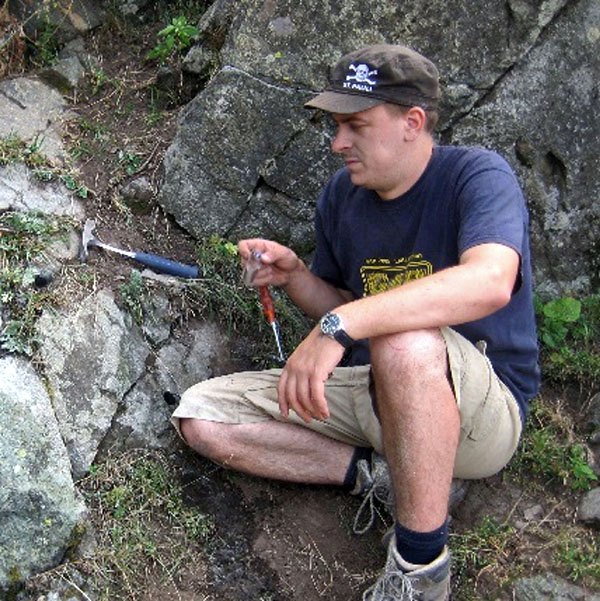
Dr Uwe Kirscher completed his PhD in geophysics at the Ludwig-Maximilians University in Munich in 2015 working on the Paleozoic paleogeography of the Central Asian Orogenic Belt using paleomagnetism. In early 2016, he joined Curtin University as a CCFS funded Research Associate as part of Professor Zheng- Xiang Li’s Laureate team. His research interests are focused on Proterozoic paleomagnetic constraints of the Australian Precambrian blocks. He aims to use several paleomagnetic approaches to constrain and more precisely understand the supercontinent cycle and its geodynamic features. His research contributes to CCFS Flagship Program 5.
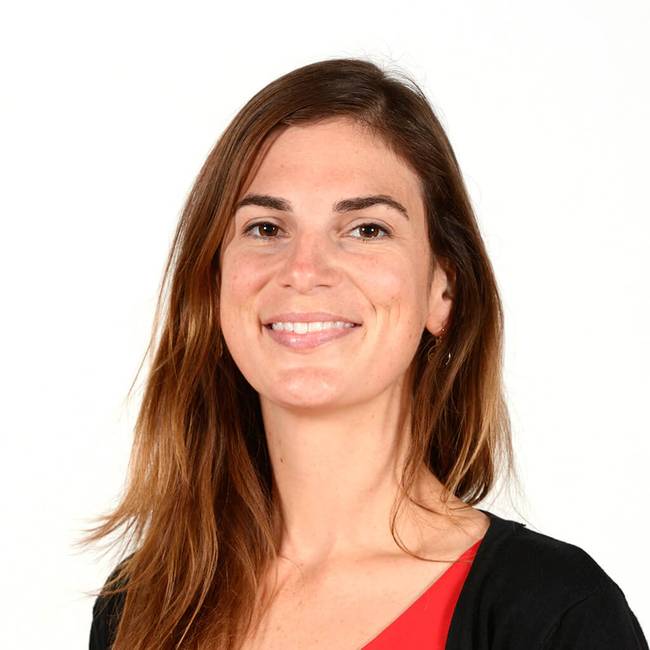
Dr Crystal LaFlamme attended Acadia University for her BSc and completed her MSc at Memorial University of Newfoundland studying the tectonostratigraphy and formation of volcanic rocks of the Makkovik Province in northern Labrador. Her PhD at the University of New Brunswick investigated the formation and geodynamic evolution of a reworked Archean high-grade terrane in the Western Churchill Province in the Canadian Arctic.
In February 2015 Crystal joined CCFS/CET as a Postdoctoral Research Associate to study the sulfur isotope record of craton margins. Her research focuses on tracing anomalous sulfur isotope signatures preserved in the Archean-Proterozoic rock record to better understand large-scale crust formation processes and small-scale thermochemical processes leading to metal occurrences. This knowledge base is building to ultimately better understand the link between fluid-driving tectonic processes and ore genesis.
Crystal was awarded a tier II Canada Research Chair in sulfur isotope geochemistry at Carleton University, Canada. See Research highlight Holy hibonite! - ‘meteoritic’ mineral assemblages in volcanic rocks.

Dr Ross Mitchell is a Research Fellow in the Earth Dynamics Research Group at Curtin University. He completed his PhD in geology and geophysics at Yale University in 2013 on “Supercontinents, the true polar wander, and the paleogeography of the Slave Craton”.
His interests centre on the supercontinent cycle, which describes not only the suturing and rifting of continents via plate tectonics but also the wholesale organisation of mantle convection patterns, which has consequences for true polar wander. Prior to Pangea, paleomagnetism is the only quantitative method for reconstructing continents. Ross conducts extended paleomagnetic sampling campaigns grounded in field geology. Synthesising newly acquired data with the global paleomagnetic database, he aims to both generate paleogeographic maps for 3 billion years of Earth history and to evaluate how such empirical constraints shape plate tectonic and true polar wander theory.
He pairs these studies of ancient supercontinents with detailed magnetostratigraphic profiles of Phanerozoic time and electron- probe analyses of magnetic mineralogy in order to test the limits of paleomagnetism as a paleogeographic method. His research contributes to CCFS Flagship Program 5.
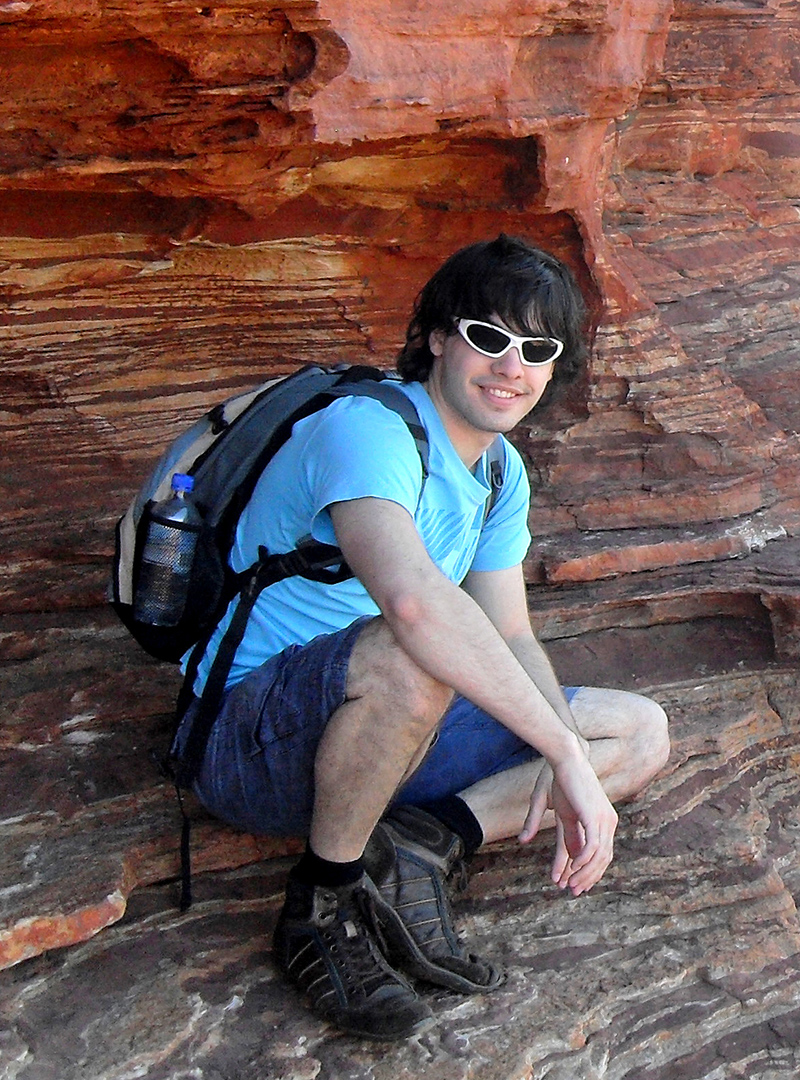
Dr Hugo Olierook completed his undergraduate studies at Curtin University in 2011. He continued at Curtin with a PhD examining the tectonic and stratigraphic evolution of the Western Australian margin. After completing his PhD in 2015, he moved to the University of Liverpool as an NERC postdoctoral associate studying reservoir quality in the United Kingdom and adjacent petroleum domains. In November 2016, Hugo returned to Curtin University and joined CCFS to take up a two-year postdoctoral fellowship as part of the SIEF Distal Footprints project in the Capricorn Orogen of Western Australia. Hugo used his expertise in geochronology, geochemistry, tectonics and geodynamics to understand the 3 billion year history of the Capricorn Orogen and its mineral endowment. In 2019 Hugo will continue at Curtin University as the manager of geochronology and geochemistry projects for the mining and mineral exploration industry, liaising with geological surveys around the globe.
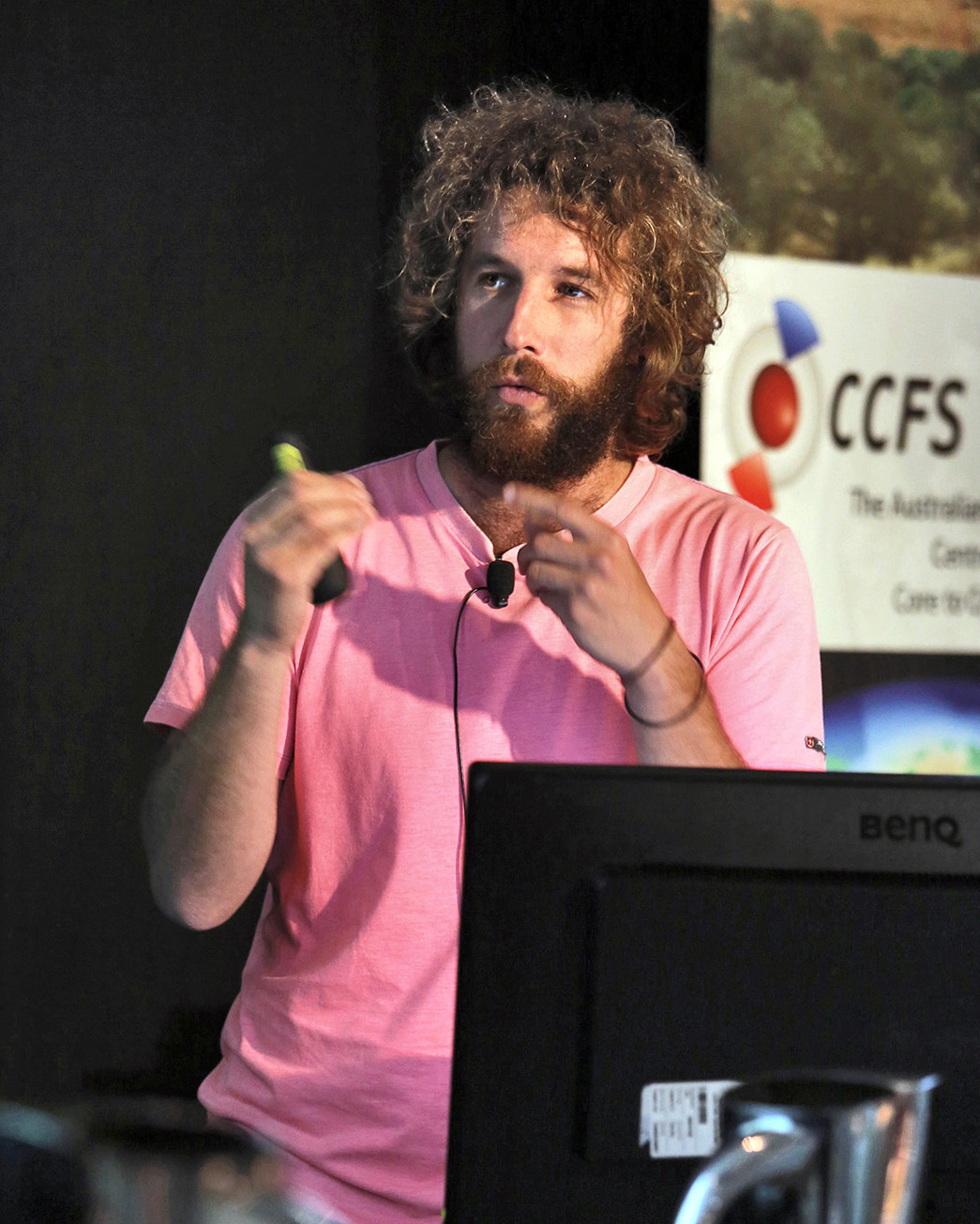
Dr Beñat Oliveira completed his Bachelor and Master degrees in Civil Engineering at Universitat Politecnica de Catalunya. In February 2013, he joined CCFS-MG3 as a PhD student, where he developed an internally-consistent numerical platform for multiphase reactive transport modelling. The numerical model is based on two main ingredients: 1) a general and scalable multi-phase approach, coupled with 2) a sound chemical thermodynamic framework for the reactive and chemical transport phenomena. He continues with his research as a Research Associate in CCFS. In his current role, he has expanded his code to quantitatively assess the origin and evolution of transcrustal magmatic systems, including both disequilibrium trace-element and isotopic modelling. This research contributes to CCFS Flagship Program 3. See Research highlight Pyroxenite layering in the upper mantle and how to find it.
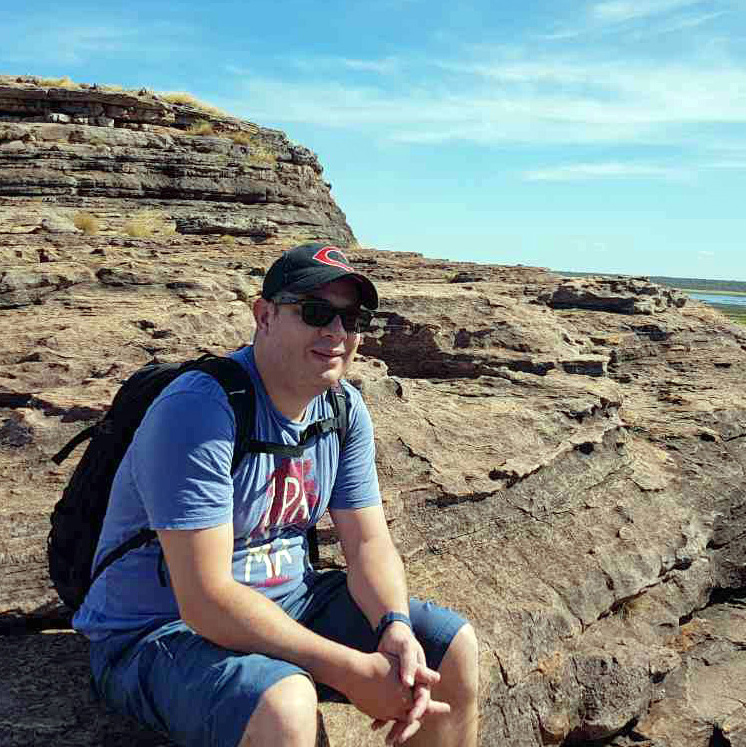
Dr Luis Parra-Avila , from Caracas, Venezuela, earned his PhD as part of CCFS at CET UWA, in 2016. His PhD project focused on establishing the crustal tectonic history of the Paleoproterozoic Domain of the West African Craton across Burkina Faso, Ghana, Mali, Ivory Coast and Guinea and its links to mineral deposits. The project was funded through the ARC linkage program and was part of the AMIRA West Africa Exploration Program (P934A).
In October of 2015, Luis became a Post-Doctoral Research Associate with a research focus on evaluating zircon characteristics and the link to porphyry Cu deposits. The project sought to develop new pathfinders to assist with the exploration of porphyry Cu deposits and to understand the difference between fertile and unfertile tectonic environments for such deposits.
Luis’ research aims to unravel the geologic history of Northern Thailand. This project focuses on the tectonic history (collision and amalgamation) of continental and arc terranes, including closure of ocean basins across the Sukhothai (arc) terrane, Nan Suture zone and western Indochina terrane. It follows and expands on existing work in the Loei-Phetchabun Foldbelt and mid-Triassic intrusive magmatism associated with subduction of Paleotethys seafloor beneath western Indochina. The results of this study will provide a geologically ‘young’ example of continental crustal evolution to compare with Archean and Proterozoic examples in Australia and other ancient cratonic regions elsewhere, as well as a context for understanding the formation of particular mineral deposits. His research contributes to CCFS Flagship Program 2.
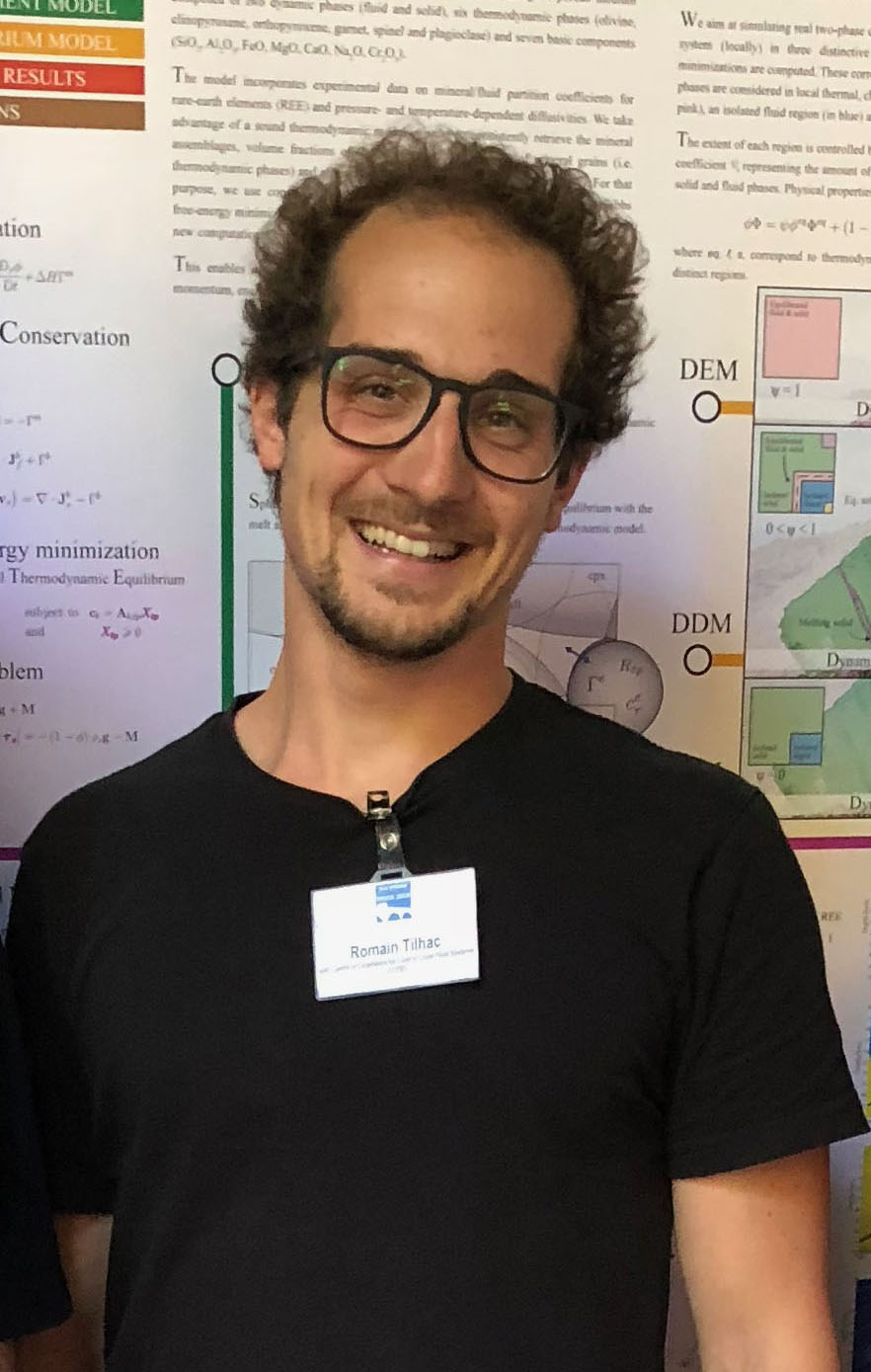
Dr Romain Tilhac completed his BSc and MSc in Earth and Planetary Sciences at Paul Sabatier University in Toulouse, France. He joined CCFS in 2013 as a cotutelle PhD student between Macquarie University and Paul Sabatier University. Romain’s thesis focused on the petrology, geochemistry and isotope geochemistry (Sr, Nd, Hf and Os) of arc-related mantle pyroxenites exposed in the Cabo Ortegal Complex, Spain. After graduating from both universities in 2016 and 2017, he took up a Research Associate position in CCFS at Macquarie University. His current research relates to the compositional evolution of the Earth’s mantle and the genesis of mantle-derived magmas, and associated tectonics and geodynamics. He uses petrology, in situ and solution geochemistry and geochronology of mafic and ultramafic terranes to understand the sources and differentiation processes of arc magmatism with the aim to better understand elemental mobility and isotopic fractionation associated with pyroxenite petrogenesis and the role of fluid- melt-rock interaction in subduction zones. This research contributes to CCFS Flagship Program 1 (TARDIS II).
Romain also works in collaboration with Beñat Oliveira on the numerical modelling of reactive transport associated with melt generation, migration and differentiation, melt-rock interaction and metamorphic reactions as part of the Flagship Program 3.
In October 2017, he became the manager of the TerraneChron® team at CCFS. TerraneChron® integrates in situ analysis of U-Pb ages, Hf-isotopes, and trace-element concentrations of zircons and fosters collaboration with industry and geological survey partners. See Research highlight Pyroxenite layering in the upper mantle and how to find it.
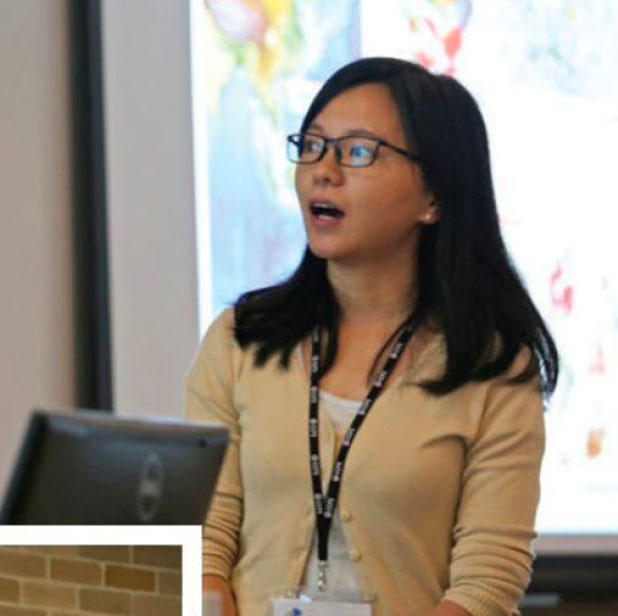
Dr Weihua Yao completed her undergraduate study at China University of Geosciences (Wuhan), and graduated with a PhD degree from Curtin University (August 2014). After her graduation, Weihua joined CCFS as a Postdoctoral Research Associate working with CCFS, TIGeR, ACTER and IGCP648 at Curtin University. Her research focused on sedimentary, stratigraphic and provenance correlations between the Indian-Australian Gondwana and Asian continents (including South China and Indochina blocks), and also the Precambrian paleogeography of Hainan Island in the supercontinents Nuna and Rodinia.
In April 2018 Weihua took up the position of Associate Professor at Guangdong Provincial Key Lab of Geodynamics and Geohazards, School of Earth Sciences and Engineering, Sun Yat-sen University, Guangzhou, China.

 ARC Centre of Excellence for Core to Crust Fluid Systems
ARC Centre of Excellence for Core to Crust Fluid Systems